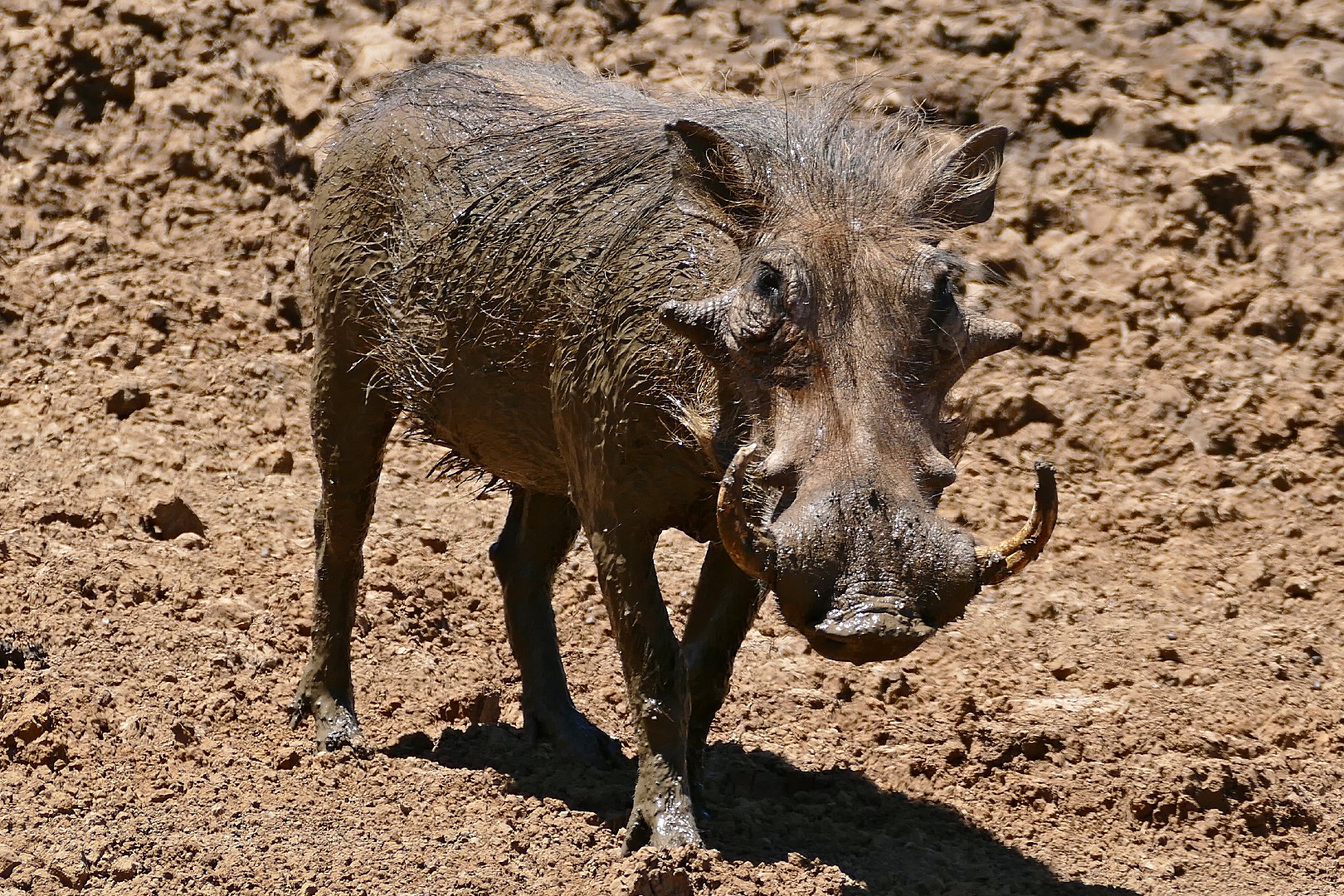Common warthog
A species of Warthogs, Also known as South african warthog Scientific name : Phacochoerus africanus Genus : Warthogs
Common warthog, A species of Warthogs
Also known as:
South african warthog
Scientific name: Phacochoerus africanus
Genus: Warthogs
Content
Description General Info
 Photo By Bernard DUPONT , used under CC-BY-SA-2.0 /Cropped and compressed from original
Photo By Bernard DUPONT , used under CC-BY-SA-2.0 /Cropped and compressed from original Description
The common warthog is a medium-sized species, with a head-and-body length ranging from 0.9 to 1.5 m (3.0 to 4.9 ft), and shoulder height from 63.5 to 85 cm (25.0 to 33.5 in). Females, at 45 to 75 kg (99 to 165 lb), are typically a bit smaller and lighter in weight than males, at 60 to 150 kg (130 to 330 lb). A warthog is identifiable by the two pairs of tusks protruding from the mouth and curving upwards. The lower pair, which is far shorter than the upper pair, becomes razor-sharp by rubbing against the upper pair every time the mouth is opened and closed. The upper canine teeth can grow to 25.5 cm (10.0 in) long and have a wide elliptical cross section, being about 4.5 cm (1.8 in) deep and 2.5 cm (0.98 in) wide. A tusk will curve 90° or more from the root, and will not lie flat on a table, as it curves somewhat backwards as it grows. The tusks are not used for digging, but are used for combat with other hogs, and in defense against predators – the lower set can inflict severe wounds. Common warthog ivory is taken from the constantly growing canine teeth. The tusks, particularly the upper set, work in much the same way as elephant tusks with all designs scaled down. Tusks are carved predominantly for the tourist trade in east and southern Africa. The head of the common warthog is large, with a mane down the spine to the middle of the back. Sparse hair covers the body. Its color is usually black or brown. Tails are long and end with a tuft of hair. Common warthogs do not have subcutaneous fat and the coat is sparse, making them susceptible to extreme environmental temperatures. 
General Info
Lifespan
7-11 years
Diet
Common warthog primarily fills its diet with plant material, foraging on a variety of crops, grasses, and roots. Interestingly, it also consumes carrion, transforming it into an opportunistic omnivore.
Appearance
Common warthog are medium-sized animals with a barrel-shaped body, covered by coarse, spiky fur. Their overall coloration is greyish-brown. The most distinctive features are two pairs of upward-curved tusks and facial warth-like growths. Males are slightly larger and possess more prominent 'warts'. Young may show a faint streaking pattern on the body.
Behavior
Common warthog is a predominantly diurnal species, primarily living in matriarchal social groups. They forage in the morning and late afternoon, using their tusks to root for bulbs or tubers. Exceptionally alert, quick to detect threats, common warthog is known to release a loud warning call before fleeing. They vigorously defend their territory by marking with secretions from the preorbital glands.
Population
Decreasing